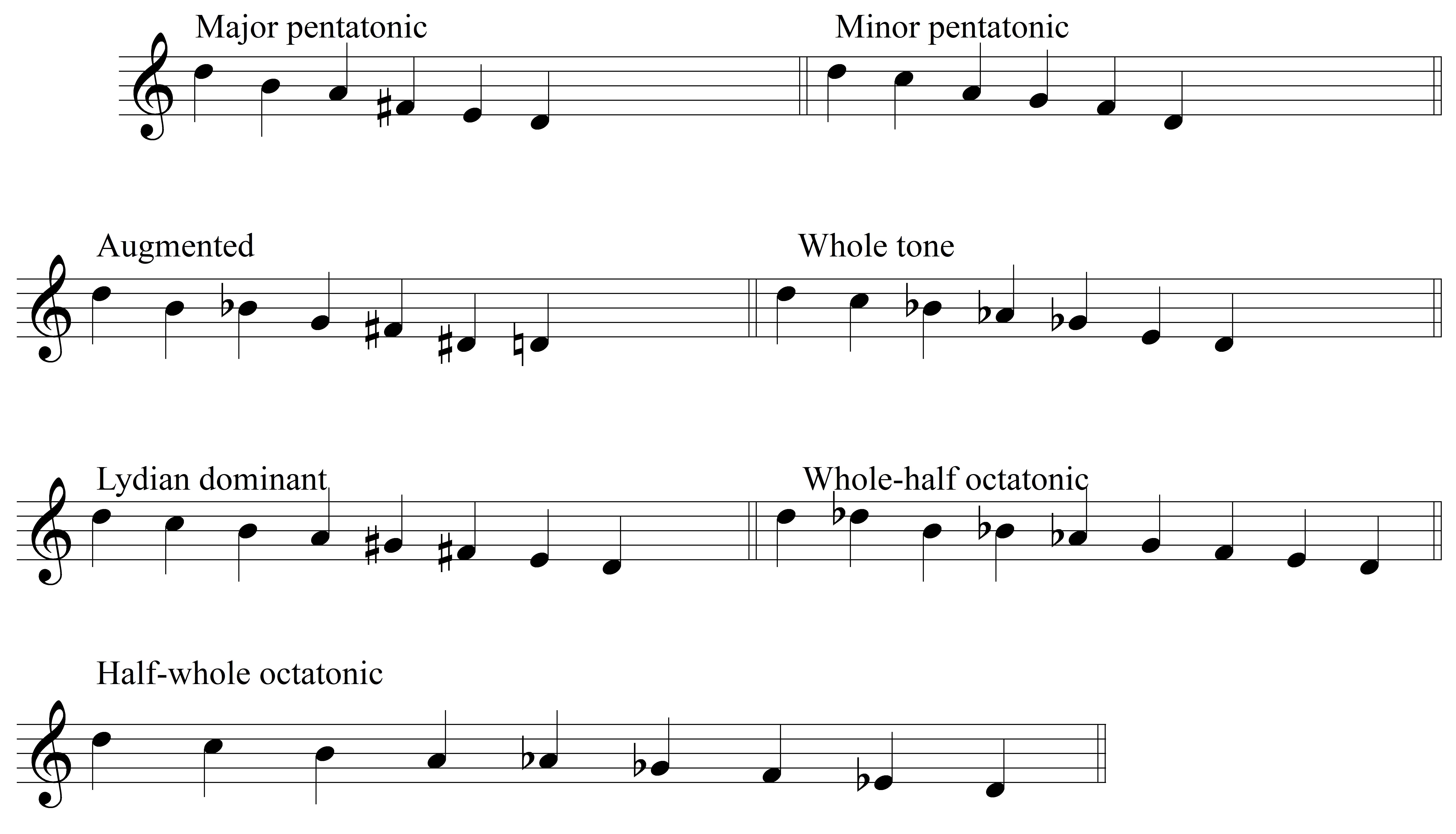Integrated Aural Skills 2019-20
Non-Diatonic Scales... Now in Descending Motion!
This week, we will expand on our recognition and notation of non-diatonic scales to include descending motion. For whatever reason, most listeners find it easier to identify and notate scales in ascending motion, so the descending ones may need extra practice.
Practice the following descending scales on the piano and sing them, too.

Questions to ask
- Which scales begin with a minor second?
- A major second?
- A minor third?
How to identify the scales – a three-step process
- Count the notes – is the scale pentatonic, hexatonic, heptatonic, or octatonic?
- Refine further – what do the intervallic relations of the scale teach you?
- Notate, and use the methods discussed in class to check your notation.
Checking mechanisms
In the heat of the moment, anyone can make careless notational errors. When you notate scales, try to use more than one method to check your notation.
- In pentatonic scales and Lydian dominant scales, you can use the solfege of the key signature you’ve identified to check your spelling.
- For the hexatonic scales, use the arpeggiated augmented triad to check your notation. Remember, both types of hexatonic scale that we’re studying are composed of two augmented triads. The only difference is that in the augmented scale, the triads are a half-step apart, whereas in the whole tone scale, they are a whole step apart.
- For the octatonic scales, use the arpeggiated fully diminished seventh chord to check your work. In jazz, the octatonic scale is called the “diminished scale” for this very reason.